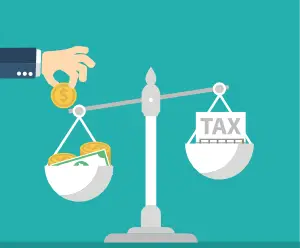
Understanding the IRS Substitute for Return
Click to ask Mike Ask Mike The Internal Revenue Service (IRS) Substitute for Return (SFR) is a term many taxpayers

The Internal Revenue Service (IRS) is responsible for collecting federal taxes, and one aspect that often catches taxpayers off guard is the accrual of interest on unpaid tax liabilities. However, there are circumstances in which individuals and businesses may be eligible for interest abatement—a process that can provide much-needed financial relief. In this comprehensive guide, we will delve into the intricacies of IRS interest abatement, exploring the eligibility criteria, application process, and key considerations to help you navigate this avenue successfully.
Before delving into interest abatement, it’s crucial to comprehend how IRS interest accrues. The IRS charges interest on any unpaid tax amount from the due date of the return until the date of full payment. This interest is compounded daily and can accumulate rapidly, significantly adding to the overall tax debt. The interest rate is determined quarterly and is based on the federal short-term rate plus a fixed percentage.
Interest abatement is not automatically granted, and the IRS carefully evaluates each request on a case-by-case basis. To be eligible for interest abatement, you must meet specific criteria outlined by the IRS. Here are some common scenarios in which interest abatement may be considered:
IRS Error or Delay: If the IRS makes an error in processing your tax return or there is an unreasonable delay in resolving your case, you may be eligible for interest abatement. This could include situations where the IRS fails to apply a payment correctly or if there are processing delays beyond your control.
Written Advice from the IRS: If you rely on written advice from the IRS that results in an incorrect calculation of your tax liability, you may qualify for interest abatement. It’s essential to keep a record of any written communication from the IRS to support your case.
Natural Disasters or Casualty Events: Individuals or businesses affected by natural disasters or casualty events may be eligible for interest abatement if the event hinders their ability to meet tax obligations.
Military Service: Members of the military services may be granted interest abatement if they are serving in a designated combat zone or if they are hospitalized as a result of injuries sustained while serving in a combat zone.
Undue Hardship: In some cases, the IRS may consider interest abatement if paying the full amount of interest would result in undue hardship for the taxpayer. This is a subjective criterion and requires a compelling argument and supporting documentation.
If you believe you meet the eligibility criteria for interest abatement, it’s essential to follow the proper channels to submit your request. Here is a step-by-step guide to the application process:
Submit a Written Request: Prepare a written request for interest abatement, clearly stating the grounds for your request. Be specific and provide all relevant details, including your name, taxpayer identification number, tax year(s) in question, and a detailed explanation of why you believe interest abatement is warranted.
Supporting Documentation: Gather all supporting documentation that substantiates your claim. This may include copies of correspondence with the IRS, evidence of IRS errors or delays, written advice received from the IRS, documentation of natural disasters or casualty events, military orders, or any other relevant information.
Undue Hardship Documentation: If you are claiming undue hardship, provide comprehensive documentation of your financial situation. This may include income statements, bank statements, information about your assets and liabilities, and any other relevant financial information.
Complete Form 843: In most cases, you will need to complete Form 843, “Claim for Refund and Request for Abatement.” This form serves as the formal request for interest abatement and should be submitted along with your written request and supporting documentation.
Mail Your Request: Send your complete request, including the written statement, supporting documentation, and Form 843, to the address specified in the IRS instructions. Be sure to use certified mail with return receipt requested to ensure that your request is received and properly documented.
Navigating the IRS interest abatement process requires attention to detail and a thorough understanding of the criteria involved. Here are some key considerations and tips to enhance your chances of a successful application:
Timeliness is Crucial: Submit your request for interest abatement as soon as you become aware of the circumstances that make you eligible. Delays in filing your request could affect the IRS’s decision.
Accuracy and Completeness: Ensure that your written request is accurate, concise, and includes all necessary details. Incomplete or inaccurate information may lead to delays in processing your application.
Professional Assistance: If your case is complex or involves legal nuances, consider seeking professional assistance from a tax professional or attorney. They can guide you through the process, help you present a strong case, and increase the likelihood of a favorable outcome.
Keep Copies: Maintain copies of all documents submitted, including your written request, supporting documentation, and Form 843. This documentation may be essential for future reference or appeals.
Be Prepared to Negotiate: In some cases, the IRS may not grant full interest abatement. Be prepared to negotiate and discuss a partial abatement if it aligns with your financial circumstances.
Appeal Process: If your initial request is denied, you have the right to appeal the decision. Familiarize yourself with the IRS appeals process and be prepared to present additional evidence or arguments to support your case.
Conclusion
IRS interest abatement can provide relief for taxpayers facing unique circumstances that warrant special consideration. By understanding the eligibility criteria, following the proper application process, and adhering to key considerations, you can navigate the path to financial relief successfully.
You can now ask our AI assistant any questions you have about your tax debt or any tax-related issues. Whether you’re unsure about payment plans, need clarification on penalties, or want information on how to resolve your tax situation. Our AI is ready to assist you with all your tax-related concerns.

By interacting with our AI assistance, you agree to our terms & conditions. Enjoy our AI Tax Assistant responsibly.
Ask me any questions...
Related Posts

Click to ask Mike Ask Mike The Internal Revenue Service (IRS) Substitute for Return (SFR) is a term many taxpayers

Click to ask Mike Ask Mike The Internal Revenue Service (IRS) Substitute for Return (SFR) is a term many taxpayers

Click to ask Mike Ask Mike The Internal Revenue Service typically operates within a 10-year window, commencing from the

Click to ask Mike Ask Mike The Internal Revenue Service (IRS) operates within specific timeframes dictated by statutes of limitations

Click to ask Mike Ask Mike understanding the ins and outs of the 10-year statute of limitations (SOL) is essential.
Recent Posts

Click to ask Mike Ask Mike The Internal Revenue Service (IRS) Substitute for Return (SFR) is a term many taxpayers

Click to ask Mike Ask Mike The Internal Revenue Service (IRS) Substitute for Return (SFR) is a term many taxpayers

Click to ask Mike Ask Mike The Internal Revenue Service typically operates within a 10-year window, commencing from the

Click to ask Mike Ask Mike The Internal Revenue Service (IRS) operates within specific timeframes dictated by statutes of limitations

Click to ask Mike Ask Mike understanding the ins and outs of the 10-year statute of limitations (SOL) is essential.
Disclaimer: This is educational content, not legal, accounting, or tax advice.
This is a tax debt resource website, not to be used in lieu of a tax attorney or for legal advice. All information, Ai chat responses, articles, materials, and content are intended to inform users on a variety of tax topics. In no way is it intended to be construed as accounting, legal, tax, other services or advice. This site is not intended to be used to avoid tax penalties or tax debt that may be imposed by law. Terms and Conditions. Your use of this site constitutes acceptance of the following terms and conditions.
This is a tax debt resource website, not to be used in lieu of a tax attorney or for legal advice. All information, Ai chat responses, articles, materials, and content are intended to inform users on a variety of tax topics. In no way is it intended to be construed as accounting, legal, tax, other services or advice. This site is not intended to be used to avoid tax penalties or tax debt that may be imposed by law. Terms and Conditions. Your use of this site constitutes acceptance of the following terms and conditions.
© 2023 · Tax Debt Monster, Inc. All rights reserved

For all Tax Professionals that would like to partner up with us. By partnering with us, you’ll help us connect and make a positive impact in the tax community. Partner up with us and receive a complimentary Ai Tax Sidekick to help support your clients at no cost! Click here if you’re interested in our Partner-Up program

By interacting with our AI assistance, you agree to our terms & conditions. Enjoy our AI Tax Assistant responsibly.
How may I help you with your tax issue?